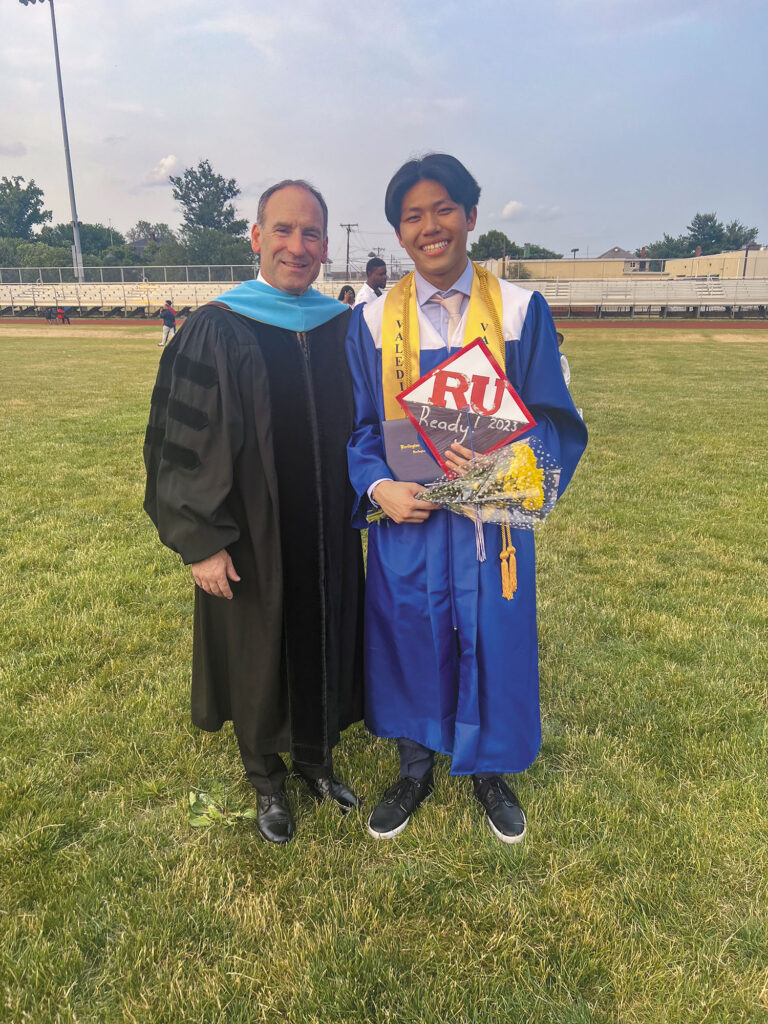Student Centered: April 2024
What seemed like a normal day in March 2020 turned upside down after hearing Principal James Flynn come on the loudspeaker to announce the extended two-week spring break. The hiatus from school was coupled with business closures, panic for food, water, and toilet paper, as well as fear of a virus we knew little about.
A Transition
The peak of COVID was also the end of my freshman year at Burlington City High School. Like many other school districts in the United States, ours completely transitioned to virtual learning. While I understood the necessity of this move, going virtual had many complications outside of the typical school day. The biggest one for many students was the impact on clubs and activities. After-school activities are especially important to students like me as they enable us to pursue our interests and unplug from academics to have some fun. However, due to online learning, participation in such activities was much more challenging.

Some of the more established clubs and organizations like student council and National Honor Society moved their meetings online. Other clubs had a harder time making the switch. Our principal acknowledged the challenges extracurriculars faced and their importance for students. From the start of the pandemic, he was brainstorming ways to continue all school functions as “normally” as possible. Then, toward the middle of my sophomore year Principal Flynn unveiled his newest idea—Raising Student Voice & Participation (RSVP). An NASSP program, RSVP was new to Burlington City. It enables students to strengthen their school communities through a series of three schoolwide summits, usually held in classrooms. During these summits, students gather to share their observations of community issues, their recommendations for improvements, and a framework for how to put those recommendations into action. (For more on RSVP, see this article.)
RSVP was not a new program for many other schools; before the pandemic students participated in the program in person. At Burlington, our first RSVP program had to be virtual.
Since a significant number of students attended the first online meeting, two groups were established: a leadership committee and another general RSVP committee. The leadership committee distinguished itself from the general RSVP body by working closely with school staff to help write the proposals. The general committee helped facilitate the seminars that were held throughout the school year. I was very fortunate to be invited to join the leadership committee.
We worked with administration and planned two summits for the entire 7–12th grades on Zoom, using breakout rooms to assist us with our smaller groups. The first summit I facilitated focused on introducing students to the concept of using their voices through RSVP. At first, I remember staring into a very not so active chat box with mainly RSVP students participating. Since many other students felt uncomfortable participating in that original meeting, we later created a Google form for everyone to share their thoughts. The form worked, and we received many ideas from every student. I can recall our team trying to figure out which three to five issues would encompass all the great ideas our peers came up with.
After the second summit, it was clear that a large portion of students wanted to address mental health. The results were not surprising, considering the year-long isolation, virtual learning, civil unrest related to the death of George Floyd, deaths from COVID, and fear for loved ones.
There were many avenues we could take to tackle mental health concerns in school. So, we met once again on Zoom to bounce ideas off each other and develop a clear action plan, which we presented to the board of education for approval.
The Results
Our plan was to help the district establish “Wellness Wednesday.” The catchy name with alliteration would be a day for staff and students to step away from academic stress and focus on mental health. By the spring of 2021, all students were back in person for the first-ever Wellness Wednesday, which was a half day for students. In the morning, we had teachers sign up for hosting wellness activities that they felt comfortable running, such as make-up tutorials, yoga/meditation, and a reading room.
“We were able to take genuine feedback from our peers and generate a plan to implement change; it was a collective effort that illustrated the strength in student voice.”
The first Wellness Wednesday allowed us to reflect and make adjustments for future ones. We planned one Wellness Wednesday for each quarter, and all students looked forward to them. The days felt like a reward for the amount of work we completed during the marking period and for our ability to adapt to and overcome the adversities of the pandemic.
Aside from the students, Wellness Wednesday afternoons were also reserved for staff mental health. After students left for the day, staff had the afternoon to partake in wellness activities, such as tie-dyeing, watching movies, playing with therapy dogs, walking the track, or simply spending time in their classrooms or with colleagues.
Overall, we received overwhelming support for our initiative. What made it so successful was that students were given the keys to change something in school. We were able to take genuine feedback from our peers and generate a plan to implement change; it was a collective effort that illustrated the strength in student voice. RSVP made my last two years of high school more meaningful, but it was not just meaningful for me. Our work created a positive change for students after us, and that legacy makes me proud.
Raymond Lin is a graduate of Burlington City High School and a freshman at Rutgers University.
